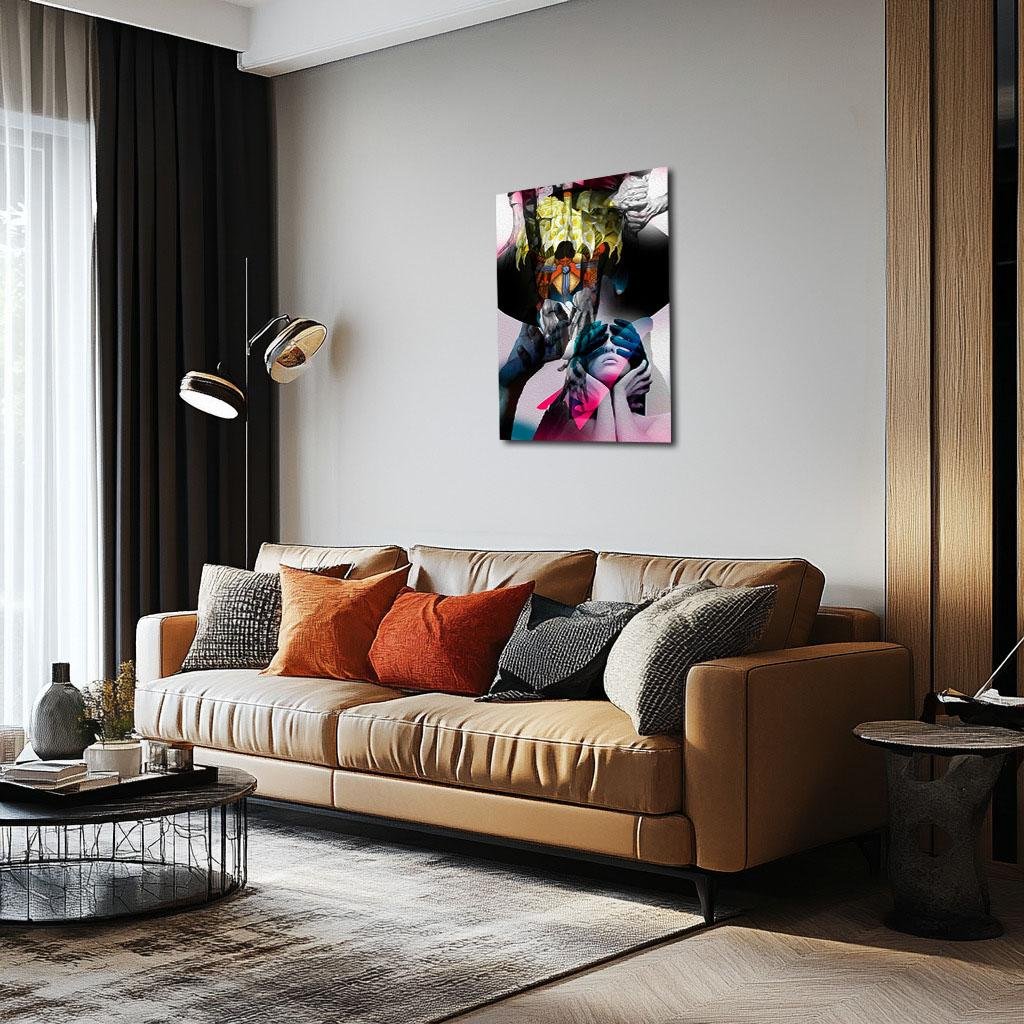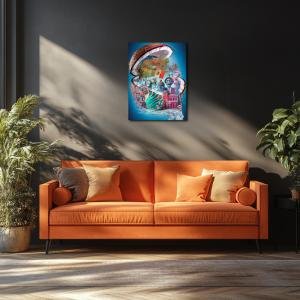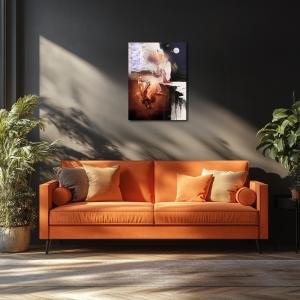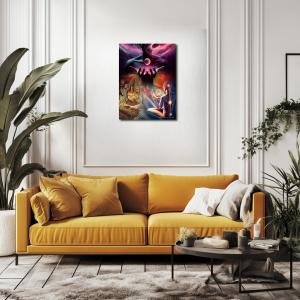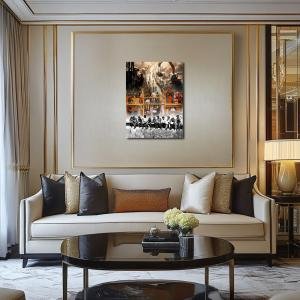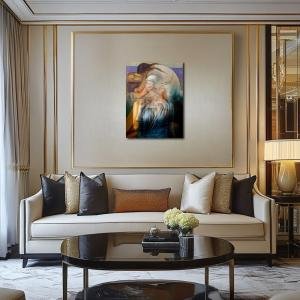The Weight of Beauty: A Modern Echo of Rivera’s Vendor
The Weight of Beauty reimagines Diego Rivera’s Flower Vendor as a surreal meditation on emotional burden, identity, and inherited weight. Centered on the iconic kneeling vendor beneath a cascade of bright yellow calla lilies, the piece layers over her image ghostly hands, blurred faces, and a modern woman bowed under psychological tension. With Rivera’s earthy tones contrasting against bold pinks, cyans, and monochrome hands, the work explores beauty as both gift and pressure. It transforms the labor of flower-carrying into a contemporary metaphor for emotional visibility, silence, and the unseen toll of existence.
Please see Below for Details…
Hotline Order:
Mon - Fri: 07AM - 06PM
404-872-4663
This reinterpretation of Diego Rivera’s Flower Vendor is a surreal reflection titled The Weight of Beauty , fusing Rivera’s monumental portrayal of labor with contemporary emotional fragmentation and the disorienting poetry of identity. Where Rivera’s original focused on the resilience of indigenous womanhood burdened by nature’s bounty, this version deconstructs that gesture into layers of metaphor—body, bloom, and burden entangled in visual echoes of touch, concealment, and cultural weight.
At the core of the image is the iconic flower vendor—kneeling, bowed under the golden arc of calla lilies. Her presence is not merely symbolic; it is gravitational. She becomes the visual center of pressure in the composition, anchoring a dreamlike vertical descent of hands and obscured faces. These hands, depicted in grayscale, do not hold—they overwhelm. They cover eyes, caress temples, clasp wrists. They are abstracted into symbols of both support and suppression, care and control. Rivera’s vendor, who once carried flowers with dignity, now seems caught in a net of human emotion and modern paralysis.
Behind and beneath the flower cluster, the entire canvas splits into ghostly dualities. On the lower half, a contemporary figure—stylized, ethereal, emotionally raw—emerges in fragments. Her face is half-lit, half-concealed, the hands over her eyes painted in streaks of neon pink and cyan. This contrast of modern hues against Rivera’s earth tones is jarring and intentional. Her posture mirrors the vendor’s: head bowed, enclosed. But where Rivera’s subject is weighed down by flowers, this woman is weighed down by perception itself—the layered hands suggest anxiety, censorship, overstimulation, even identity distortion in the digital age.
Color becomes the emotional tether through which the old and the new collide. The bright yellow of the calla lilies stands undiminished, radiant and resilient. It is the symbol of offering, of fertility, of burdensome beauty. Rivera chose yellow for its natural brilliance and spiritual resonance—it represented life as something to be carried, not celebrated. In this reinterpretation, the yellow remains a beacon but is now framed by absence and fragmentation. Its vibrancy is not diluted but isolated, forcing us to contemplate how purity can be smothered by complexity.
The lower portion transitions into tones of electric pink, icy teal, and soft violet—colors that speak not to the earth but to introspection, artificiality, and emotional friction. These are the colors of psychological modernity, of neon dreams and digital haze. They suggest femininity under duress—feminine forms bathed not in nature but in projection. This woman is lit not by sun but by metaphor. Her skin is not touched by wind but by the symbolic grasp of societal pressure.
Black and white tones dominate the surrounding hands—neutral yet imposing. These colors are neither villainous nor redemptive; they are metaphysical. They represent memory, trauma, inheritance. Black is not evil. It is shadow, the unseen weight passed from one generation to another. White is not peace. It is blankness, the silence forced upon women across time and culture. Together, they frame the yellow lilies like parentheses around a whispered truth.
The composition flows in diagonal tension. From top to bottom, the viewer descends from Rivera’s clarity to the blurred softness of modern anxiety. There is no single horizon line; instead, the image becomes a freefall through perception, ending in the closed eyes of a woman trying to see herself through the noise. The motion is downward, like breath held too long or a thought sinking into the chest.
When I created The Weight of Beauty , I envisioned Rivera’s vendor not as a static icon, but as a recurring spirit—a symbol of emotional labor that transcends time and geography. In this piece, the flowers she carries are not merely flora, but memory. And the hands around her are not just human—they are symbolic pressures, the touch of patriarchy, culture, self-doubt. The fusion of Rivera’s form with modern surrealism is not meant to beautify, but to awaken. This work speaks to all who carry too much—not just on their backs, but in their minds and hearts.
It asks: what happens when the world’s expectations no longer rest only on our shoulders but press against our vision, our self-perception, our capacity to feel? And what if beauty—the very thing Rivera’s vendor offered—has become not liberation, but burden?
Add your review
Your email address will not be published. Required fields are marked *
Please login to write review!
Looks like there are no reviews yet.

